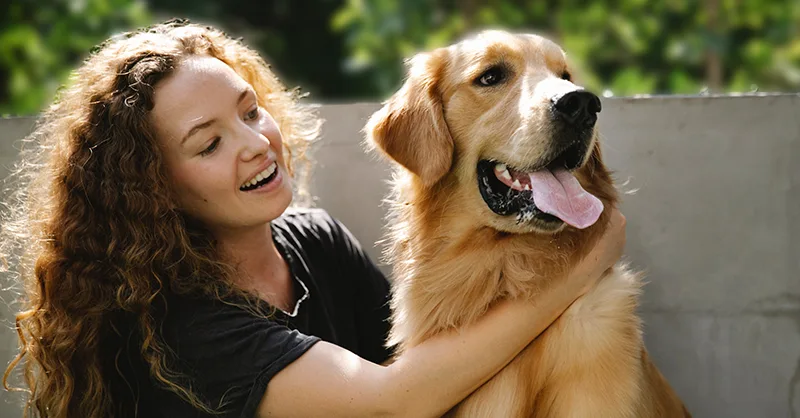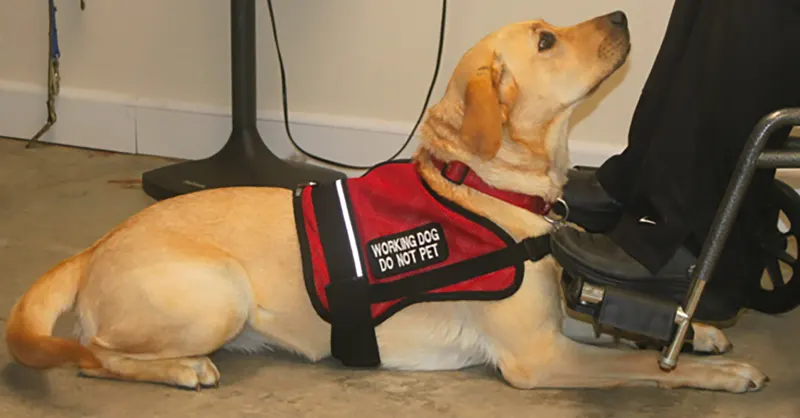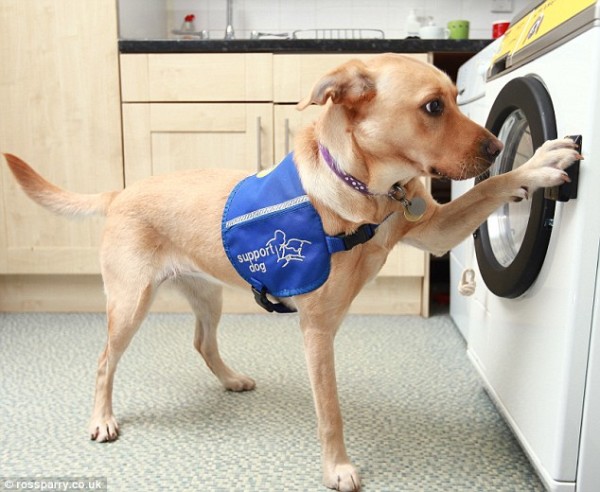Archive for the ‘News’ Category
With the troubled times we live in, more people are looking to animals for comfort, support, companionship, and unconditional love. Some may view these animals as pets, but for those with an emotional or mental disability, an emotional service dog can be the difference between barely living and living well.
In this article, we are going to cover the difference between an emotional support animal and a service dog. We will also cover the kinds of animals that can be an ESA, who can prescribe an ESA letter, and the value of an emotional support dog certification.
The Difference Between an ESA and a Service Dog1. The main difference between an emotional support animal and a service dog are the ESA does not require special training in order to help the individual.
2. An emotional support dog can be of any breed and is there primarily to comfort and support the person suffering from a mental/emotional issue. The types of problems that are considered include:
Depression Anxiety Bipolar disorder/mood disorder Social fear/phobias Panic attacks PTSD3. Service dogs, on the other hand, are usually highly trained to assist the disabled individual in day-to-day living. Some tasks a service dog is trained to do may include:
Picking up dropped items Being the eyes and ears Retrieving medications Calling 911 in an emergency Alerting to an oncoming seizure or drop in blood sugar What Animals Can Qualify as an ESA?As we mentioned earlier, not all ESA’s are dogs. In fact, any animal can be considered an emotional support animal. These include;
Dogs Cats Birds Reptiles Horses RabbitsAll emotional support animals are covered under Federal laws specifically the Fair Housing Amendments Act (FHAA) and the Air Carrier Access Act (ACAA). This means your ESA will be allowed into “no pets” policy housing and also in the cabin of an airplane (regardless of the size of the ESA) with no additional cost to you. Please keep in mind, you will need to follow local rules and airline regulations around animals. You cannot violate local, state, or federal law by having an exotic emotional support animal that is prohibited by law.
Who Can Prescribe an ESA Letter?If you are suffering from an emotional or mental disability and feel an ESA may be a good fit for you, there are a few ways to go about getting one. First off you must be diagnosed by a mental health professional, therapist or a psychologist. These are the only people that can prescribe an ESA. He/she must be licensed in their field and be willing to write you a letter/document stating you need an ESA.
If you are currently working with a therapist, ask them for an ESA Letter. If they do not believe in animal therapy or are unaware of the laws surround ESA regulations, we recommend you seek support from a legitimate ESA letter referral company. When working with an online referral company, please be sure you are working directly with a therapist. You do not want to risk having a fake ESA letter or an ESA letter written by a company, not a therapist.
How to get an ESA Letter Online The Emotional Support Dog CertificationWith your letter/document from your attending mental health professional, you can then order for an emotional support certificate from a legitimate Assistance Animal Registry. Although not required at all times, you may consider ordering a vest, a custom identification card, and a certificate of registration for your personal convenience. You and your ESA will also be listed in the Assistance Animal Database of Service Dog Certification.
With this type of identification handy, your ESA will be immediately recognized as a assistance animal dog. This will save you time and frustration of explaining your ESA. If you are unaware of Emotional Support Animal rights, you may learn more here.
The Emotional Service DogThere’s no doubt that having an emotional service dog (or other ESA) is giving many people back the confidence and ability to be happy. Don’t let an emotional or mental disability keep you or a loved one from living a normal life.
If your dog has been trained to perform a task for your disability, you may be interested in a Service Dog instead of an Emotional Support Animal. Service Dogs have more rights and are permitted full public access rights.
What you need to know about having a Service Dog Certificate
Do you feel that having a service dog can help you with an emotional, mental or physical disability? Service dogs play an important role for people in need. However, you may have heard that service dogs can run upwards of $30,000! This is more than most people can afford. The good news is you can get a service dog without being rich.
In this informational post, we are going to cover some helpful tips on service dog and service dog laws. This includes tips on adopting your dog from a shelter or local rescue, what the dog needs to have to be considered a service dog, and how to get your canine a service dog certificate.
Where Can I Get a Service Dog?
As we mentioned earlier, service dogs that have been bred, born and raised/trained to be in this field can be unaffordable and unreasonable for most people. But on the upside, they will come fully able to do the specific tasks you require from the service dog.
But what if you can’t afford these exorbitant fees?
You do have other options such as adopting a dog from your local shelter or rescue.
Why adopt a dog from a rescue or shelter?
Saving their life can save your life. Adopting a dog from your local shelter and rescue will provide you the feeling of knowing you are rescuing a life. The dog will know it too and provide you with unconditional love and affection. Adopting a dog from your local rescue or shelter are not only much less costly, but most have already been tested for illnesses, up-to-date on their vaccinations and (if old enough) have been spayed or neutered. Non-pure breed dogs are less prone to disease and genetic issues. Once you have trained your service dog, you will have a close connection that you will want to have for years and years.What Should I Look for in a Potential Service Dog?
Since the point of having a service dog is to help an individual with daily life, this dog will have to be highly trained to be out in public places. With this in mind, the characteristics to look for in a potential service dog are;
Calm temperament Willingness to be handled and eager to please Acceptance of strangers but alert of surroundings Willingness to be groomed Non-reactive to the business around them Motivated by treats or praiseCan I Train My Own Service Dog?
Yes! Once you have found a potential service dog, you have the options of either training it yourself or enlisting the help of a professional trainer. Training your service dog yourself is not as intimidating as it may seem at first! In addition, if you train your service dog yourself you have a deeper and more meaningful connection.
The first training your puppy or dog will require is the basic obedience. This includes sit, stay, down, and wait. Once your canine has these skills in place, then the training becomes more specific to your own needs.
How Long Does It Take to Train a Service Dog?
Each dog is different. Some dogs require 6 months of training while others can pick up new skills and tasks within a few weeks. The ADA Service Dog guidelines do not include mandatory training time. As long as your dog is well behaved in public and is trained to assist you with your disability, they can be considered your service dog(s). Once your service dog is able to help assist with your disability, you are able to take them into public places. Public places include restaurants, hotels, airlines, parks, beaches, and even your office.
ADA Service Dog Registry Requirements
Unfortunately, there are some people who may attempt pass off their untrained pet as a service dog. For this reason, airlines, restaurants, apartment managers/owners and other business have the right to enquire about what tasks your service dog provides for you and many will ask to see your service dog certificate.
Although, you may not necessarily need a service dog certificate as the ADA does not require this, having one helps you legitimize your need for one. This is also extremely beneficial if your disability is not clearly identifiable by the general public (ie you’re not in a wheelchair etc.). In addition, this will also help staff or government employees from discriminating against you accidentally. Unfortuantely, Service Dog rights are not part of standardize training.
Once your dog is fully trained, your next step will be to register your service dog and obtain a service dog certificate.
If you are not ready to train your dog to become a service dog, you may be interested in certifying your dog to become an Emotional Support Animal. Emotional Support Animals are Federally protected and can live with you in ‘no-pet’ housing and fly with you inside the airplane cabin. Emotional Support Animals do not have to be specially trained, unlike service dogs. For more information on Emotional Support Animals, here is a helpful article.
A Service Dog Certificate Makes Life a Bit Easier
Once your dog is fully trained to be in service, it’s well worth your time, money and effort to get a service dog certificate. Not every business or person may be as willing to accept your canine as a service dog, so having a physical custom service dog identification card or a digital copy on your phone, will save you time, stress, and frustration.
Having a service dog certificate just makes life a bit easier…
If you suffer from an emotional or physical disability you may be wondering what qualifies a dog to be a service dog. In this post, we will answer that question and give you some facts you will want to know when getting a canine for the purpose of service.
Can My Dog Be a Service Dog?Many people ask the question of whether their current dog can be a service dog? The answer to this question is dependant on what you need your service dog to do for you. If you have a dog for emotional support or to help you with stress and/or anxiety, then there are no restrictions on the canine companion. In fact, an emotional support animal (ESA) can be anything from a snake to a horse but know there are restrictions on this type of “service” animal.
However, if you require a dog to do more than just offer comfort, then you will need the canine to be properly trained to do the tasks required. For example, if the dog has to pull a wheelchair, then a Chihuahua will not be considered a service dog as it simply would not have the strength to complete this task.
Obedience TrainingWhether you train your dog yourself or enlist the help of an agency or professional trainer, your service dog must be obedience trained. This entails the basic commands of sit, stay, come, down, drop, heel and leave. Depending on the breed of dog you have chosen or already have this can take weeks to months to accomplish.
Socialization SkillsAnother important quality your service dog must possess is socialization skills. A skittish, hyperactive or unruly dog will not do well as a service dog. Your dog must be quiet, calm, relaxed, alert, and of course, friendly.
Work TasksTo qualify as a service dog your canine must be able to demonstrate the ability to do the work tasks that you cannot do for yourself. This can include fetching medicine bottles, opening drawers, or even alerting you to a drop in your blood sugars or of an oncoming seizure.
Public Access TrainingHow your dog acts in public areas is crucial to having a service dog. These working dogs must not respond to any of the noise, commotion, chaos, food smells or people when out with its handler. This type of training may take several months before your dog is desensitized to hustle-and-bustle of being in a public place. Some dogs may never have the ability for this type of public access training and therefore would not be considered a service dog.
Service Dog RulesBecause a service dog is there to help the handler there are rules your dog must follow when out in public. These include;
No sniffing of people or merchandise No barking at people or other animals No begging for food or table scraps No jumping onto people or objects No lunging at passing people or other animals No overexcited or hyperactive behavior No eliminating in an inappropriate area. Dogs must learn to relieve themselves on command. Handler’s BehaviorThere are a lot of rules for a service dog to follow, but what about the handler? Some agencies may have you sign a form that both you and your service dog will behave accordingly when out in public. This can include;
Being prepared to answer the questions of “is the dog a service dog and what task does it perform for you?” Being polite, confident and courteous even if the people you are dealing with are not familiar with the American Disability Act and service dogs.Although it is not required by law, a service dog vest and/or badge is helpful when taking your working dog out into the public. You may also register your service dog with a reputable organization. This informs people at a glance that your dog is there to provide you with a service and not just a pet you are trying to “break the rules” with.
Service Dog Qualification Is a ProcessHaving a properly trained and accredited service dog is a process that takes time. Even though you can take an ordinary dog and turn it into a service dog, it will have to exhibit the qualities it takes to do this important work. It is also highly recommended to start your service dog training when your dog is just a puppy. Teaching an “old dog new tricks” will be much tougher, and he may not be able to accomplish all the tasks and training required to be a full-fledged service dog.







